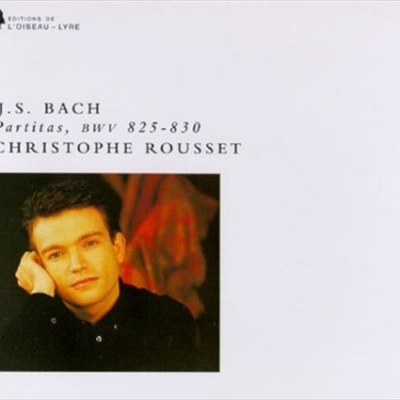
Bach: Partitas, BWV 825 - 830
Absolutely impeccable in his finger work and notably lucid in his phrasing, Rousset has abundant vitality - these are extremely impressive and deeply musicianly performances. Recent issues of the Bach partitas on the harpsichord have provoked reservations about the quality of the recordings: the set by Kenneth Gilbert so uncomfortably close to the microphone as to pick up distracting action noise from the instrument, Trevor Pinnocks somewhat fuzzy, Scott Rosss too reverberant to be ideal. So perhaps I may start by commending the admirably warm but clean and natural sound secured by the producer (Chris Sayers)—even in a church (not far from Toulouse)—of the very fine Hemsch harpsichord of 1751 that Rousset has used before. But equally basically, if not more so, Rousset, who has already won golden opinions for his Rameau, Froberger and Bach discs, proves a formidable challenger to his distinguished older rivals. Absolutely impeccable in his finger work and notably lucid in his phrasing, he has abundant vitality, while eschewing extremes of tempo (which prompted a few queries with Pinnock): he can be firmly rhythmic without becoming stiff, but he can also be flexible—there is freedom in the B fiat Sarabande, the D majors elaborate Allemande and, particularly, its Sarabande. Only his treatment of the chordal figure in the G major Preambulum struck me as artificial and unconvincing; and his A minor Sarabande is reluctant to flow, though he succeeds in making the far more complex E minor Sarabande cohere well. Rousset is splendidly vigorous in the B flat Courante, sprightly in the C minors Rondeaux and sparkling in its invigorating Capriccio, crisply springy in the A minors Corrente and bouncy in its Scherzo, and exuberant in the D major Courante. He takes the Gigues of the First and Third Partitas at a very restrained pace, brings drama to the opening of the C minor Sinfonia and the D major Ouverture (spikily double-dotted) and follows each with a perky and buoyant triple-time section. In the matter of ornamentation he is the most conservative of all the players in the current catalogue: apart from some extra appoggiaturas in the G major Sarabande he adheres scrupulously to the text, not even varying repeats excepts for a couple of tiny variants in the C minor Allemande. Altogether these are extremely impressive and deeply musicianly performances: indeed, in my view they are the best set of the partitas now available. -- Gramophone [9/1993]
